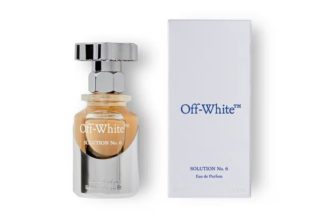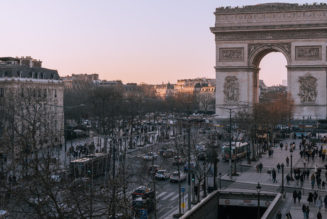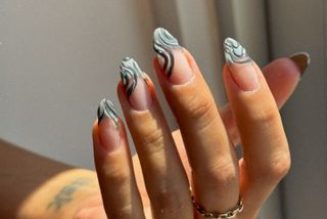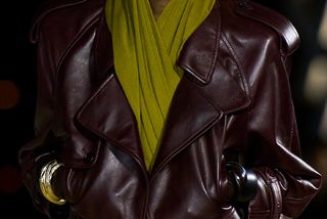
The leading global luxury brands showed topline gains for the first half of the year, despite a drop in sales in the U.S., where aspirational consumers are stretched thin and have cut back on indulgent purchases.
In most recent reporting, luxury leaders LVMH and Hermès reported on their first half of the year and Richemont for its first fiscal quarter. All but Kering showed outstanding topline gains – LVMH up 15% to $46.5 billion, Hermès advanced 25% to $7.4 billion and Richemont rose 19% to $5.9 billion during its first quarter at constant exchange rates.
As the outlier, Kering posted only 2% growth to $11.2 billion, with its performance dragged down by a 16% shortfall in North America while other markets were up, including Asia-Pacific up 11% and Western Europe rising 5%.
However, LVMH and Richemont faced troubles in the U.S. market too, though unlike Kering, their drops had little impact overall. LVMH sales didn’t decline until the second quarter and only by 1%. And Richemont’s first-quarter revenue in the Americas dropped 2%. Yet for each, it was the only geographical market where they stumbled.
LVMH, Kering and Richemont gave the same reason for their weak U.S. performance: the so-called aspirational consumers let them down. Aspirational is the industry code word for consumers who limit spending to the lower end of their price ranges, unlike true-luxury consumers who can afford to pay at the top.
And since LVMH, Kering and Richemont are ranked number one, two and six, respectively, in the Deloitte Top 100 Global Powers of Luxury report, it could be a bellwether for more troubles ahead for these luxury leaders in the vital U.S. market that could spread across the globe.
Challenging The Trend
By contrast, Hermès bucked the trend, with sales rising 20% in the Americas. The company, famous for its $10,000+ Birkin and Kelly bags, is equally renowned for making its customers wait to snag one.
Their scarcity is reflected in their high price. It’s a function of the company not compromising on quality, craftsmanship and materials, with each bag handcrafted by a single artisan in a French workshop.
“In difficult times, there is what you call a flight to quality and we have benefited,” Hermès executive chairman, Axel Dumas said during the earnings call. What he didn’t say is that only a rarified few can indulge in the Hermès level of quality.
Convenient Excuse
We can accept LVMH, Kering and Richemont’s excuse for flagging U.S. sales at face value, but it’s too simplistic. These companies have become over-dependent on the sugar high that comes from boosting sales by extending their ranges into the lower-end, more accessible price points, compared to Hermès, which has far less exposure in that segment.
The accessible luxury strategy flies in the face of exclusivity, a hallmark of the luxury business model. It spreads the brand too thin, and by making it more common, it jeopardizes the luxury status it has taken so long to build.
America Matters
The Americas, in general, and the U.S., in particular, have been the shining star for luxury brands coming out of the pandemic.
In 2019 the Americas accounted for 30% of the personal luxury goods market, putting it just behind Europe at 32% and China at 11%. By 2022, the Americas’ share grew to 32% and China’s to 17%, while Europe dropped to 27%, according to the Bain-Altagamma 2022 Luxury Goods Worldwide Market Study.
By the end of the decade, the Americas’ influence is expected to decline as China takes the lead, but given the poor track record for such long-range predictions, it pays to be skeptical. A lot can happen to disrupt the 5% to 7% CAGR Bain-Altagamma is counting on through 2030.
Plus, China is just as dependent as the U.S. on the lower-income consumer segment to prop up sales, with some 60% of global industry sales riding on their continued indulgence.
Bain reports that just 2% of customers account for 40% of global luxury sales. Those prime 2% are called Very Important Customers though not more precisely defined.
Boston Consulting Group gives a slightly different perspective, reporting 5% of customers account for 40% of sales and defines those prime 5% as true-luxury consumers who spend an average of $43,000 per year on luxury goods and experiences, though it doesn’t break down spending by category. It also reports that the remaining 60% of luxury sales come from people who spend less than $2,200 a year on their purchases.
Regardless of whether that 40% of luxury goods sales come from 2% or 5% of customers, it’s safe to assume these are people with the most coin in their pocket and in that regard, the U.S. wins hands down.
Credit Suisse reports that in 2021 there were some 24.5 million millionaires in the U.S., compared with 6.2 million in China. While the number of Chinese millionaires grew almost twice as fast as in the U.S. year-over-year – 19% compared to 11% – it will take a good eight years for China to catch up to the U.S. in the number of millionaires if it maintains a 19% CAGR and the unlikely event that the U.S. remains flat.
Aspirational Consumers Stretched Thin
Wealth gives people confidence they can withstand anything the economy throws at them, but they don’t generally tap their wealth reserves to buy personal luxury goods. Those indulgences depend upon their income.
That explains why McKinsey reports U.S. consumer confidence is on the rise, but their spending continues to fall, even among the high-income consumer segment, whose spending has been sliding most of this year, according to the credit card data it analyzed.
High-income consumers are being cautious about adding more charges to their already overloaded cards. As of mid-July, credit card debt reached an all-time high of nearly $1 trillion, and credit card interest rates have skyrocketed to 24.2%, compared with rates of 14.6% in February 2022, according to Lending Tree. It figures monthly interest charges total nearly $150 on the average $7,000 credit card balance.
Aspirational Vs. True-Luxury Consumers
While the industry calls the lower-income segment aspirational consumers, that term implies motivation, which is hard to quantify. Much preferred is a demographically based definition to describe the customers on which 60% of industry revenues depend. The Affluent Consumer Research Company with which I am affiliated proposes the term HENRYs – high-earners-not-rich-yet – with less than $1 million in wealth, excluding their home, and an average income of $263k.
They contrast with the true-luxury consumers who generate 40% of industry sales. Their average income is $558k income, and they have over $1 million in wealth, defining them as high-net-worth individuals.
Globally, the mass-affluent HENRYs are 2.5 times larger in number than the HNWI, according to CapGemini. Their greater numbers explain why they have been such an attractive growth market for luxury brands, like LVMH, Richemont and Kering, but also why the companies have more at risk when the economy goes sideways.
“Luxury brands have historically thrived among aspirational luxury consumers because they offer a level of prestige that is both desirable and attainable,” Chandler Mount, founder of the Affluent Consumer Research Company, explained. “However, in these challenging times, we’re seeing a shift in consumer behavior where this core customer base appears to be wavering.”
The HENRYs, by necessity, are infrequent luxury shoppers and not overly sophisticated regarding all the possibilities available in the luxury market. That’s one reason they are drawn to the big names with recognizable logos, like Louis Vuitton, Gucci and Burberry, which also experienced an 8% drop in America revenue in its first quarter.
These loud luxury brands meet their status and prestige needs, whereas more exclusive brands like Hermès have flown above the aspirational, mass-affluent fray and remained focused on their true-luxury customer base.
“Conglomerates like LVMH, Richemont, Kering and others that have strategized around the mainstream, aspirational luxury consumers are fighting over a shrinking customers base,” Mount said. And while they have been chasing the aspirational consumers, they risk losing their hold on the true-luxury customer as well.
The winners in the near and long term will be more exclusive brands that have held fast to the luxury business model and not caved to growth at all costs, as Professor Jean-Noël Kapferer warns, “Too many accessible products create sales but kill brand equity, dream and pricing power.”
See also:









